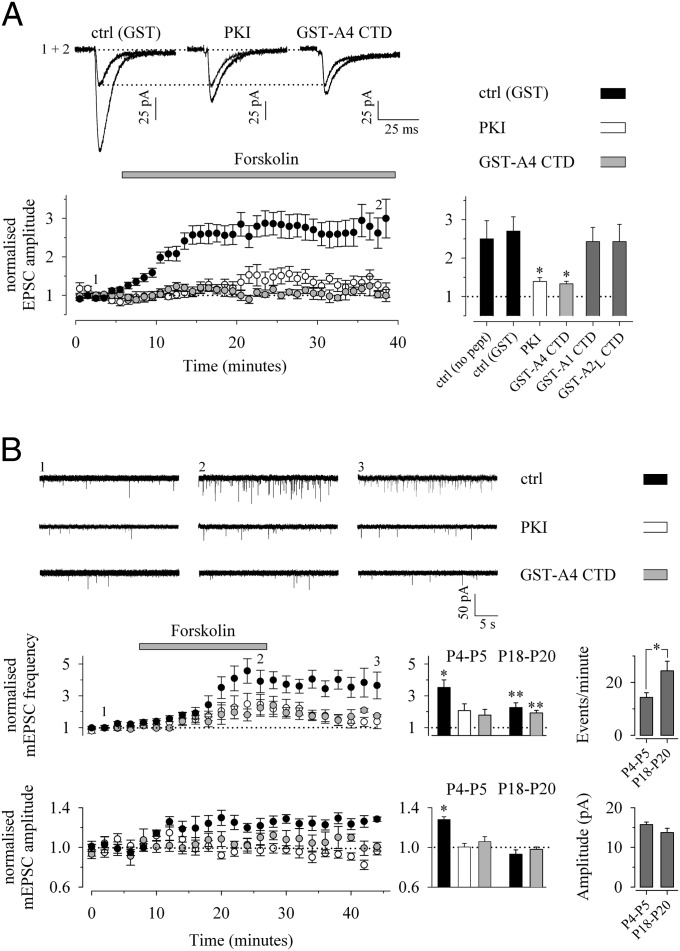Fig. 1.
Activation of postsynaptic PKA induces a robust LTP and silent synapse activation at immature synapses via the mobilization of GluA4. (A) Activation of adenylate cyclase and consequently PKA by application of forskolin (50 µM) leads to a large increase in EPSC amplitude at immature (P4–P6) CA1 pyramidal neurons. Examples of traces (Upper) and a time-course plot (Lower Left) Illustrate the effect of forskolin on EPSC amplitude during postsynaptic application of GST (n = 23), the PKA inhibitor PKI (0.1 mM, n = 10), and GST-GluA4 CTD (n = 7). (Lower Right) Summary statistics on the effects of various proteins on forskolin-induced potentiation [GST-GluA1 CTD (n = 6) and GST-GluA2L CTD (n = 6)]. (B) The effect of forskolin on mEPSC frequency and amplitude under control conditions (n = 11) and in the presence of PKI (n = 7) or GST-GluA4 CTD (n = 9) in the postsynaptic cell. Examples of traces from the indicated time points (Upper) and time-course plots (Lower Left) from the recordings at P4–P5 are shown. (Lower Center) The histogram depicts pooled data on the effect of forskolin on mEPSC amplitude and frequency at P4–P5 and P18–P20 under the different recording conditions. (Lower Right) The average mEPSC frequency and amplitude at the beginning of the experiment at the two developmental time points (P4–P5: n = 27; P18–P20: n = 17). *P < 0.05; **P < 0.01.

